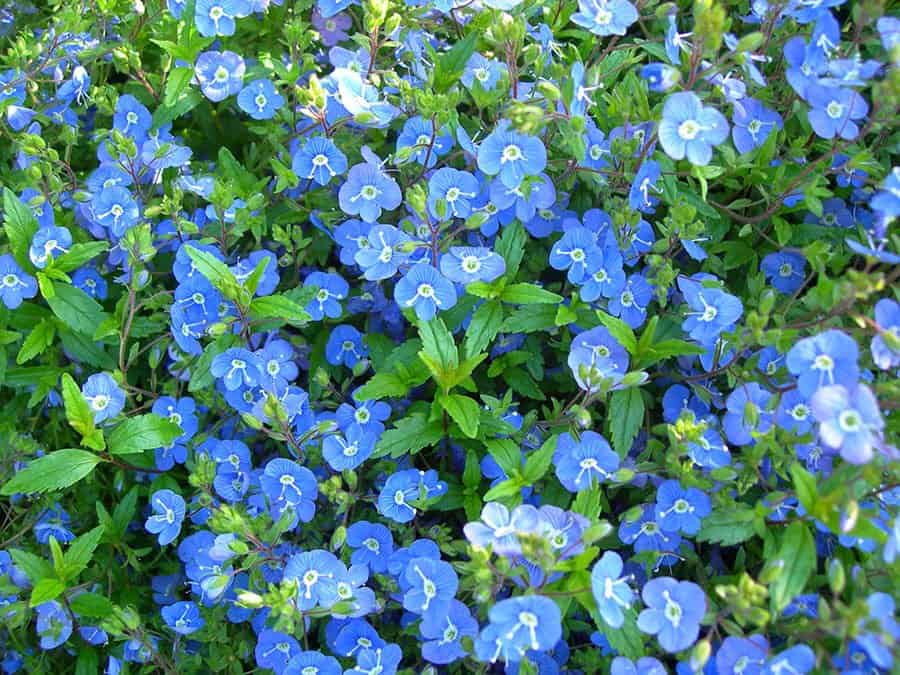Flowers that are true blue are relatively uncommon in the plant world, which is probably what makes them especially desirable. Sometimes, we’re lured by descriptions in catalogues that claim a flower will be breathtakingly blue, only to find its petals are pale periwinkle or vibrant royal purple. Not unattractive, but not what you hoped for.
Several blues are available in the large Veronica genus, many of which are useful groundcovers, such as V. whitleyi and ‘Georgia Blue’ veronica. Both have survived in my garden for at least 15 years. There are plenty of taller veronicas to consider, too, with attractive spires of blooms in shades of pink, purple and white, as well as blue. Tony Post describes many of these garden-worthy varieties in “Veronica makes a statement.”

Where can I buy [fill in the blank]?
Whenever I write about a particular plant, emails arrive asking where it can be purchased. Unfortunately, there is no central plant registry of what each garden centre in Canada has in stock. Oh, how I wish that were the case! Frankly, I don’t even know what my local nurseries will carry from season to season.
Telling readers I purchased Plant A at Store B two years (or even two months) ago isn’t helpful, because it may or may not still be available there. Plus, if you live outside Southern Ontario, the information wouldn’t be practical.
I understand how frustrating it is to not be able to find a plant you desperately desire. It happens to me, too. I keep a list of plants I’m looking for on my mobile phone so that it can be checked whenever I’m in a nursery, just in case something elusive happens to turn up when I’m shopping for something else.
Other strategies you might try:
• Make note of the plant’s botanical name and the specific cultivar, if there is one. This will help when you’re at a garden centre or consulting a seed catalogue. Asking for a tall yellow coneflower with blue-green leaves is not as precise as asking for Rudbeckia maxima.
• Get to know the people who place the plant orders for your local garden centres, and tell them what you’re looking for. Perhaps they can contact their wholesalers to see if it can be ordered in for next year.
• If you see the plant you pine for in a private garden, leave a note in the mailbox to ask the owners where they found it. Gardeners are generally helpful people.
• If the plant you want has been bred or marketed by a big plant distributor, such as Proven Winners or Monrovia (you may see their branding on plant tags), go online and send an email to the company’s customer service department. Give them your location and ask where the nearest retailer of their products is located.
• Once garden club meetings, plant sales and garden tours resume, try to attend them. You’ll meet a wealth of like-minded people, many of whom may have good plant sources to share.
• Don’t rely on the inventory list posted on a garden centre’s website. Unfortunately, websites aren’t always updated in a timely fashion. Call ahead before making a special trip.
• Big box home improvement and grocery stores have a limited inventory of basic plants. Independent garden centres are more likely to have a wide selection of plants, as well as staff who know what might be arriving later in the season.
• Don’t dismiss small-scale hobbyists who grow and sell plants at their home or farm. I’ve found some real treasures when I’ve stopped at such places during car trips to other parts of the country (in the Before Times).
Companion planting, broccoli tips and flower bombs
• A different take on garden myths and companion planting by Thomas Christopher on Garden Rant. It’s an interesting account of “research” done by an Austrian philosopher and mystic in the late 19th century.
• For broccoli growers, tips and recommended varieties can be found at “Broccoli Know-How.”
• If you’re feeling adventurous, you might like this article on how to make wildflower bombs. It’s more benign that it sounds. First, you need a bowl and some baking sheets….
